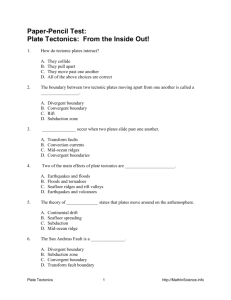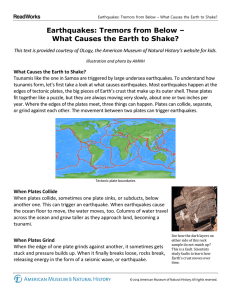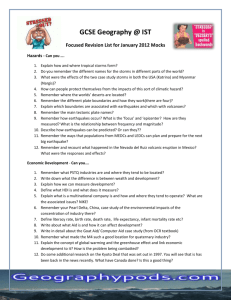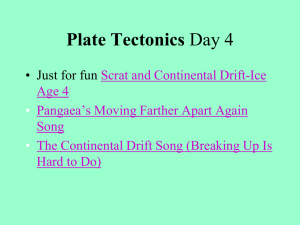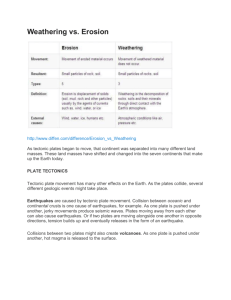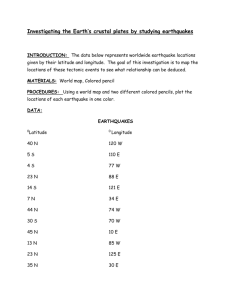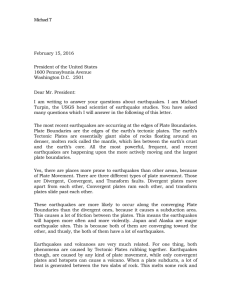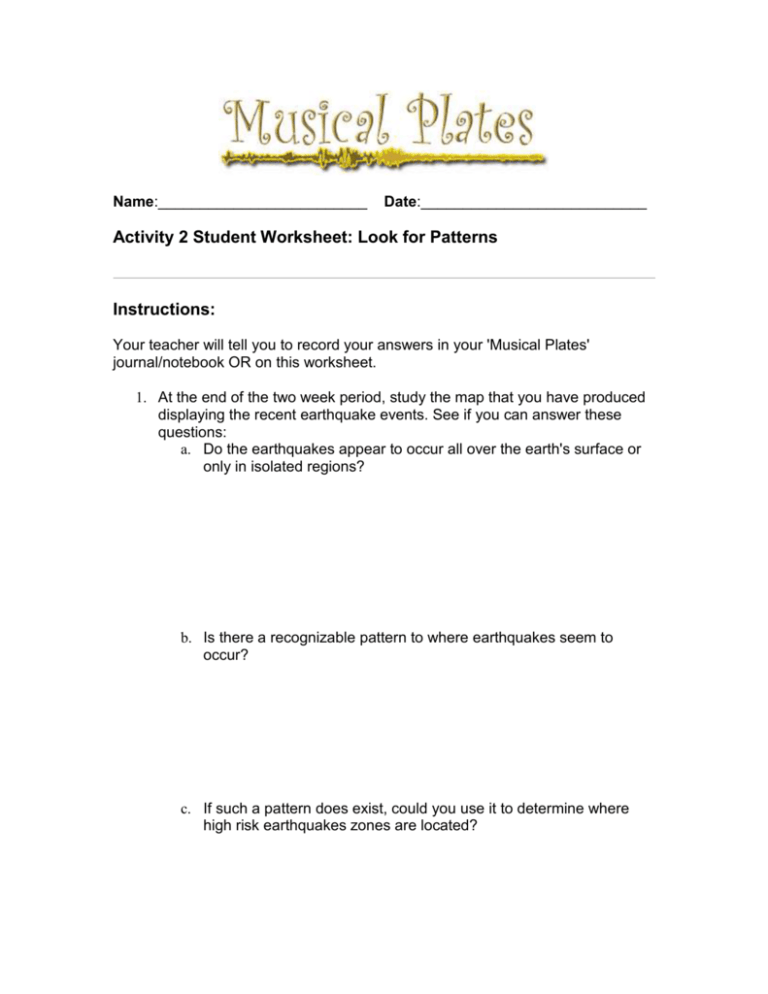
Name:_________________________
Date:___________________________
Activity 2 Student Worksheet: Look for Patterns
Instructions:
Your teacher will tell you to record your answers in your 'Musical Plates'
journal/notebook OR on this worksheet.
1. At the end of the two week period, study the map that you have produced
displaying the recent earthquake events. See if you can answer these
questions:
a. Do the earthquakes appear to occur all over the earth's surface or
only in isolated regions?
b. Is there a recognizable pattern to where earthquakes seem to
occur?
c. If such a pattern does exist, could you use it to determine where
high risk earthquakes zones are located?
d. Name several high risk zones that the President might want to
know about.
2. Now, compare the world map from Activity 1 which has the earthquakes
plotted on it to this tectonic plate map below. See if you can answer these
questions:
a. Do you see any relationship between the map you created and the
map above showing tectonic plates?
b. Do you think that there might be a correlation between tectonic
plates and earthquakes?
c. What do you think this correlation is?
d. What do you think is happening in the places where two plates are
touching each other?
e. When two plates rub against each what might the results be? Why?
How might this relate to earthquakes?
3. If you distinguished between shallow and deep earthquakes when you
plotted the data, examine this plate boundary map that shows the types of
boundaries (i.e. convergent, divergent, transform) that exist between
certain plates. See if you can answer the following questions:
a. Do deep earthquakes seem to correlate to any particular type of
plate boundary? If so, what type of boundary?
b. Do shallow earthquakes seem to correlate to any particular type of
plate boundary? If so, what type of boundary?
c. If there is a correlation, can you explain it?
Copyright © 2005 Stevens Institute of Technology,
Center for Innovation in Engineering and Science Education (CIESE) All Rights Reserved.




